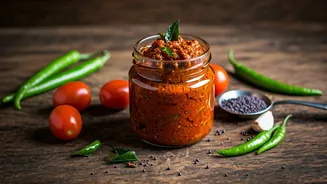What is Kombu?
Kombu, a type of edible kelp, holds a central position in Japanese cuisine. This dried seaweed acts as the cornerstone for dashi, a flavorful stock essential
to miso soup and other beloved dishes. It's a natural flavor enhancer, introducing the sought-after umami taste—a savory, satisfying sensation—without the need for added salt or oil. Kombu’s subtle yet profound impact transforms simple ingredients into culinary delights, adding a layer of complexity and depth that elevates every bite. It’s a testament to the power of natural ingredients to create memorable meals, making it a valuable addition to any kitchen. This versatile ingredient enhances soups, stews, beans, and more, providing both flavor and nutritional value. The seaweed is carefully harvested, dried, and prepared for use in a variety of culinary applications. Its impact on taste and texture is undeniable, and its presence in the kitchen promises to transform the way one perceives flavor.
Kombu Selection and Storage
When choosing kombu, consider a few factors. Look for kombu that is dark, relatively unblemished, and has a slightly frosted appearance, which indicates the presence of natural salts. Avoid pieces that appear faded or brittle, as these may have lost some of their flavor potency. Kombu typically comes in sheets or strips, with varying sizes depending on the intended use. Proper storage is crucial for maintaining its quality. Kombu has an impressive shelf life, often lasting for months, even years, when stored correctly. To preserve its flavor and texture, store it in an airtight container, away from direct sunlight, heat, and moisture. A cool, dark pantry or cupboard is ideal. The airtight seal prevents the seaweed from absorbing moisture and ensures it retains its flavor and umami-rich properties over time. With proper care, kombu remains a reliable pantry staple, ready to contribute its unique flavor to any dish. Its long shelf life makes it practical for frequent use.
Making Vegan Dashi
Vegan dashi showcases the culinary prowess of kombu. To prepare a simple dashi, start by gently wiping the kombu with a damp cloth to remove any excess salt or impurities, without washing away the flavorful surface. Place the kombu in a pot of cold water and let it steep for at least 30 minutes, or even overnight in the refrigerator, to allow the flavors to infuse. Once steeped, heat the water over low heat, being careful not to boil, as excessive heat can make the dashi bitter. Remove the kombu just before the water begins to simmer, typically around 140°F (60°C). Strain the liquid to remove any remaining particles, and your vegan dashi is ready to be used as a flavorful base for soups, sauces, and other dishes. The resulting dashi is a clear, savory broth, packed with umami flavor, perfect for enhancing a variety of vegan recipes. The gentle steeping process carefully extracts the flavors from the kombu, creating a broth that is both delicate and incredibly flavorful.
Kombu’s Culinary Uses
Kombu’s versatility extends beyond just dashi. It acts as a flavor enhancer in many preparations, enriching the taste of both simple and complex recipes. Incorporate a strip of kombu directly into soups, stews, or when cooking beans. The kombu slowly infuses the cooking liquid with umami, deepening the savory notes. When cooking beans, adding a piece of kombu helps tenderize them and reduces the formation of gas-causing compounds, making them more easily digestible. The kombu softens and releases its flavors into the beans, resulting in a creamier texture. Kombu can also be used to make kombu tea, or you can dry and grind it into a powder and sprinkle it on various dishes as a finishing touch to add flavor and texture. From enhancing soups to flavoring beans, the possibilities with kombu are endless. The seaweed also serves as a wrapping for foods to steam or grill, adding subtle salty notes to the finished products. The more you explore, the more you’ll discover its ability to elevate your culinary creations.
Cooking with Heat
Understanding the interaction of heat with kombu is important for maximizing its flavor. When making dashi, it's best to avoid boiling the kombu, as high temperatures can release bitter compounds. Instead, use a gentle simmering or steeping process to extract the most delicate flavors. For other cooking applications, kombu can be simmered, steamed, or even grilled, with each method producing a slightly different result. When simmering kombu with vegetables or beans, the heat softens the seaweed and allows it to gradually release its flavors into the dish. If grilling, a brief exposure to direct heat can create a smoky, enhanced taste. For a lighter touch, you can add kombu to stir-fries, allowing it to lightly infuse the dish with umami. Experimenting with different heat levels and cooking times can help refine the use of kombu for specific recipes. Ultimately, how you choose to incorporate heat with kombu will impact the final taste, allowing for adjustments to match individual preferences and culinary goals.








